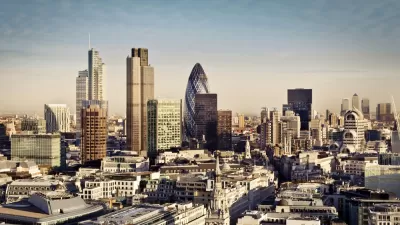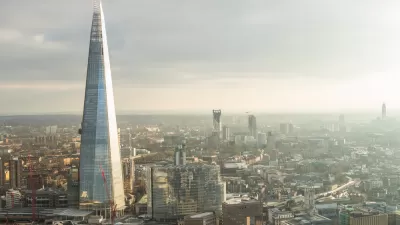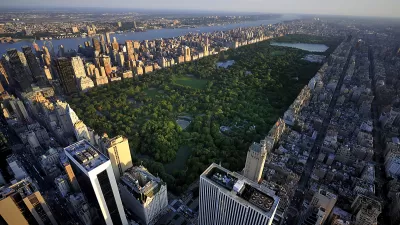"There is no nice way of putting this, but the skyline of London is being screwed," says Guardian architecture critic Rowan Moore. In an approvals process that runs roughshod over the concerns of the public, only developer egos are being served.
After a pause during the global recession, "[t]here are now, built and in the pipeline, at least 30 towers" of heights from 490-650 feet that will soon be popping up across London. Moore bemoans the decline, over the past decade, of the level of public debate and government oversight over buildings that will significantly alter the skyline, and view sheds, of this world capital.
"With minimum discussion, proposals are being waved through the planning system – and while both the mayor of London and the communities secretary, Eric Pickles, have the power to intervene in major decisions, neither has done so," complains Moore. "A decade ago, plans for buildings such as the Shard and the Gherkin were widely publicised, provoked debate and were the subject of public inquiries. Now, developers and architects hold modest public exhibitions in the immediate neighbourhood of their proposals and are not overanxious that they should be more widely known about."
Moore doesn't object to the presence of tall buildings in the city, but rather to a failure to uphold the two central principles that allowed the precedent-setting approval of the Gherkin - that such towers "should be of the highest architectural quality and also in 'the right place.'"
"The results of these shoddy processes will be visible all over the capital, in the background of famous buildings, from hills and parks, down the ends of streets. They will change the Thames, bringing a completely different scale to its banks. None of which need be a problem, if they conformed to the official planning line that tall buildings should be well designed and in the right place."
"There is no vision, concept or thought as to what their total effect might be on London, except that it will be great. In planning a kitchen, it is usual to envisage the totality before you start, but a great city has not been granted this courtesy."
FULL STORY: How a high-rise craze is ruining London's skyline

Planetizen Federal Action Tracker
A weekly monitor of how Trump’s orders and actions are impacting planners and planning in America.

Maui's Vacation Rental Debate Turns Ugly
Verbal attacks, misinformation campaigns and fistfights plague a high-stakes debate to convert thousands of vacation rentals into long-term housing.

San Francisco Suspends Traffic Calming Amidst Record Deaths
Citing “a challenging fiscal landscape,” the city will cease the program on the heels of 42 traffic deaths, including 24 pedestrians.

Amtrak Rolls Out New Orleans to Alabama “Mardi Gras” Train
The new service will operate morning and evening departures between Mobile and New Orleans.

The Subversive Car-Free Guide to Trump's Great American Road Trip
Car-free ways to access Chicagoland’s best tourist attractions.

San Antonio and Austin are Fusing Into one Massive Megaregion
The region spanning the two central Texas cities is growing fast, posing challenges for local infrastructure and water supplies.
Urban Design for Planners 1: Software Tools
This six-course series explores essential urban design concepts using open source software and equips planners with the tools they need to participate fully in the urban design process.
Planning for Universal Design
Learn the tools for implementing Universal Design in planning regulations.
Heyer Gruel & Associates PA
JM Goldson LLC
Custer County Colorado
City of Camden Redevelopment Agency
City of Astoria
Transportation Research & Education Center (TREC) at Portland State University
Jefferson Parish Government
Camden Redevelopment Agency
City of Claremont





























